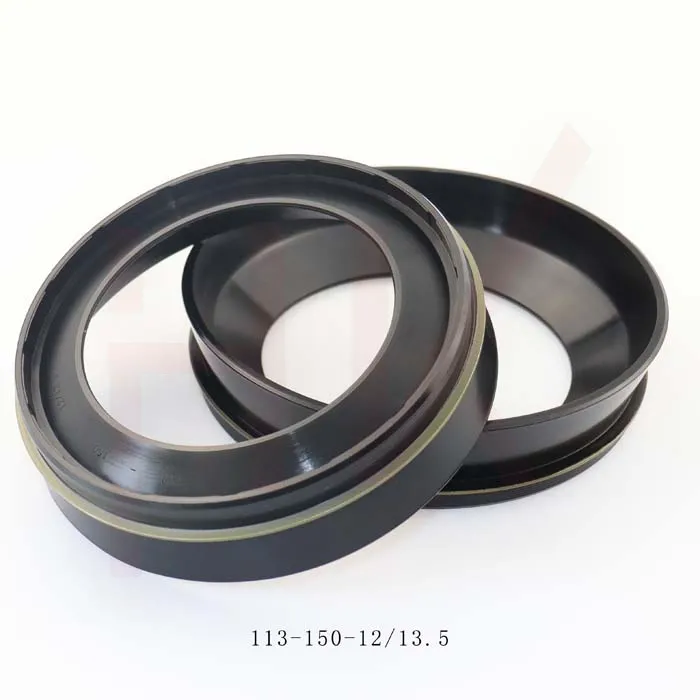Dec . 22, 2024 13:14 Back to list
rear hub oil seal
Understanding Rear Hub Oil Seals Importance, Function, and Maintenance
The rear hub oil seal is a small yet crucial component in the automotive field, specifically found in vehicles with rear-wheel drive and four-wheel drive systems. Its primary function is to prevent oil leaks from the rear axle while also keeping dirt, dust, and moisture from entering the differential housing or the wheel bearings. This article delves into the significance, function, and maintenance of rear hub oil seals, underscoring their role in ensuring vehicle longevity and performance.
Structure and Function
A rear hub oil seal is typically made from durable materials such as rubber or polymer, designed to withstand the high pressures and extreme conditions found in automotive environments. The seal is located at the interface between the axle shaft and the rear axle housing. It operates under dynamic conditions, meaning it must function effectively even when the vehicle is in motion.
When the rear wheel turns, the axle spins, and the oil seal maintains a tight barrier that prevents the lubricating oil from leaking out. This is essential, as the oil is necessary for lubricating the bearings and gears within the axle, facilitating smooth operation and reducing wear and tear.
In addition to retaining oil, the seal protects the internal components from contaminants. Dust, dirt, and moisture can lead to corrosion and premature failure of parts, resulting in costly repairs and potential safety hazards. Therefore, the integrity of the rear hub oil seal is crucial for optimal vehicle operation.
Importance in Vehicle Maintenance
The rear hub oil seal is often overlooked during routine vehicle maintenance, but neglecting it can have significant repercussions. If the seal begins to wear out or fails, it can lead to oil leaks. Not only does this compromise the lubrication of the axle assembly, but it can also result in contamination of the differential oil with dirt and grime, leading to further damage and eventual failure of the differential or bearings.
rear hub oil seal

Signs of a failing rear hub oil seal may include visible oil leaks around the wheels or a noticeable decrease in the oil level in the differential housing. If left unchecked, these issues can lead to expensive repairs, including axle replacements or bearings that need to be pressed or replaced.
Regular inspection of the rear hub oil seal during scheduled maintenance can help catch potential problems early on. Mechanics generally recommend checking the seals during tire rotations or brake inspections, as these are times when access to the rear axle is easier.
Replacement and Best Practices
Replacing a rear hub oil seal is a task that can often be performed by a proficient DIY mechanic, although for individuals inexperienced with automotive repair, hiring a professional may be advisable. The process generally involves removing the wheel, braking assembly, and sometimes the axle itself to access the seal. Care should be taken to ensure that the new seal is installed correctly and that the mating surfaces are clean and free of debris.
When replacing the seal, it is vital to use a high-quality part that meets or exceeds the manufacturer’s specifications. While it may be tempting to choose the cheapest option, the longevity and effectiveness of the seal greatly depend on its quality.
In addition to replacing the seal, vehicle owners should also take the opportunity to inspect other components, such as bearings and diff fluid, ensuring everything is in good working order. Utilizing high-quality lubricants during reassembly can also help maintain the performance of the new seal and the overall system.
Conclusion
The rear hub oil seal may seem insignificant in the grand scheme of automotive mechanics, but its role is vital in the overall function and longevity of a vehicle. Regular inspections, timely replacements, and the use of quality parts will go a long way in preventing costly repairs and enhancing vehicle performance. As with many components within an automotive system, proactive maintenance and care will keep your vehicle running smoothly and efficiently, making the rear hub oil seal a key player in your vehicle's health.
-
TCN Oil Seal Metal Ring Reinforcement for Heavy Machinery
NewsJul.25,2025
-
Rotary Lip Seal Spring-Loaded Design for High-Speed Applications
NewsJul.25,2025
-
Hydraulic Cylinder Seals Polyurethane Material for High-Impact Jobs
NewsJul.25,2025
-
High Pressure Oil Seal Polyurethane Coating Wear Resistance
NewsJul.25,2025
-
Dust Proof Seal Double Lip Design for Construction Equipment
NewsJul.25,2025
-
Hub Seal Polyurethane Wear Resistance in Agricultural Vehicles
NewsJul.25,2025
-
The Trans-formative Journey of Wheel Hub Oil Seals
NewsJun.06,2025
Products categories
















